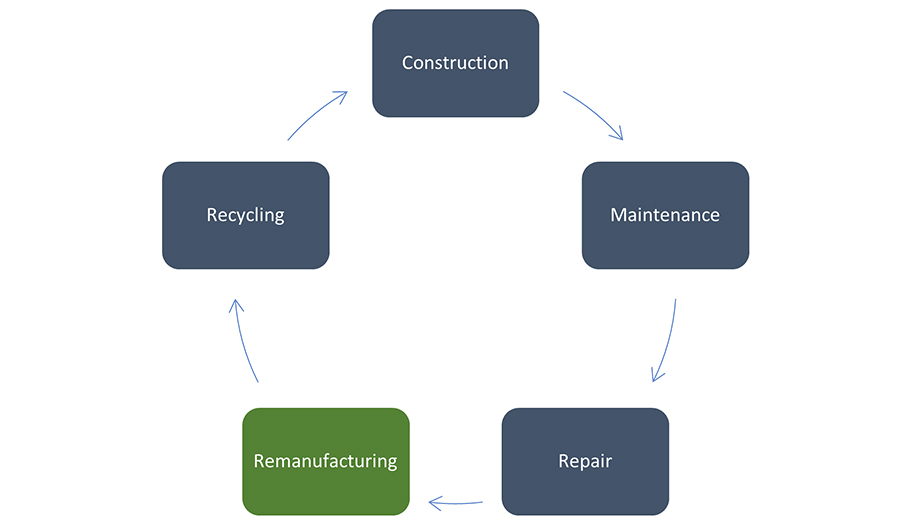
Circle Economy: Remanufacturing as a key factor for greater sustainability in medical technology
The topic of sustainability is everywhere. Even in medical technology, the concept is taking hold. In this article, DTO discusses why it is particularly difficult to run a sustainable and profitable business in this industry and how there are possibilities to do so anyway.
All themes related to medicine tend to revolve around a few key values: To support people, to help people, and to save lives in an emergency. These basic themes should never change. Because of this in some subsegments of medicine it is difficult to make the goal of conserving resources (a cornerstone of sustainability) a worthy endeavor.
Disposable production as a sustainability inhibitor
The hospital market relies on disposable products, as the high demand for sterility often precludes multiple use, resulting in vast quantities of used material and waste. It is easy to see that this system is not particularly environmentally friendly. But where can we start? Ultimately, there are several approaches:
- Use resource-saving materials instead of petrochemical materials such as plastics or solvents.
- Modify/change existing processes
The former approach should be seen as more of a long-term goal because materials such as plastics are present in almost every technical device and medical product. Therefore, it is a matter of optimizing the processes. The concept of a circular economy is gaining more and more support among researchers. But how can this be done?

The Cornerstone of the “Circle Economy”: Remanufacturing
A Circular Economy or Circle Economy reduces the need for fossil-fuel non-renewable resources, the amount of waste products, emissions, and end-of-life losses by intelligently designing products with the end goal of recycling them. While maintenance and repair are defined as standard processes, remanufacturing is an increasingly important part within the circular economy. Recycling is typically the last effort and is not always sustainable.
Remanufacturing as an important factor in medical technology
On behalf of Vanguard AG, the Fraunhofer Institute research team compared the new production of an electrophysiology catheter (cardiac catheter) with a remanufactured catheter using so-called medical remanufacturing. In particular, the effects on global warming as well as the resource consumption of both processes were compared. The result: medical remanufacturing reduces the CO2 footprint by more than 50 percent and resource consumption by more than 28 percent compared to new production. The study was published in the scientific journal "Sustainability". A key effect is the number of remanufacturing cycles. More benefits are reaped as the number of cycles increase.
The advantage of remanufacturing is that the quality of the product is as high as a new product. Municipal recycling facilities do not have the means to recycle the high-performance polymers. This means that without remanufacturing the material goes to waste. The concept of remanufacturing also has its limits. After all, in terms of the ecological footprint, it is certainly better to use a more sustainable product from the start of production than to reprocess plastics several times. But it is an important intermediate step on the road to greater sustainability. Now remanufacturing just needs to become more widespread in practice.
Further information
Are you a medical technology provider planning to make your processes more innovative, efficient, and sustainable? Do you need a strong partner to advise you and sets you up for the future? DTO supports you in developing a sustainability concept. Through our reliable network of Technology Scouts, consisting of industry experts, we connect you with start-ups and idea providers. By means of market and competition analyses, DTO uncovers what the market in the field of sustainability and medical technology currently looks like, which cooperative partners offer the most benefits, and which market activities can be observed among the competition. Get in touch with us today to get started on your journey to sustainability.
Text written by Kai Wichelmann